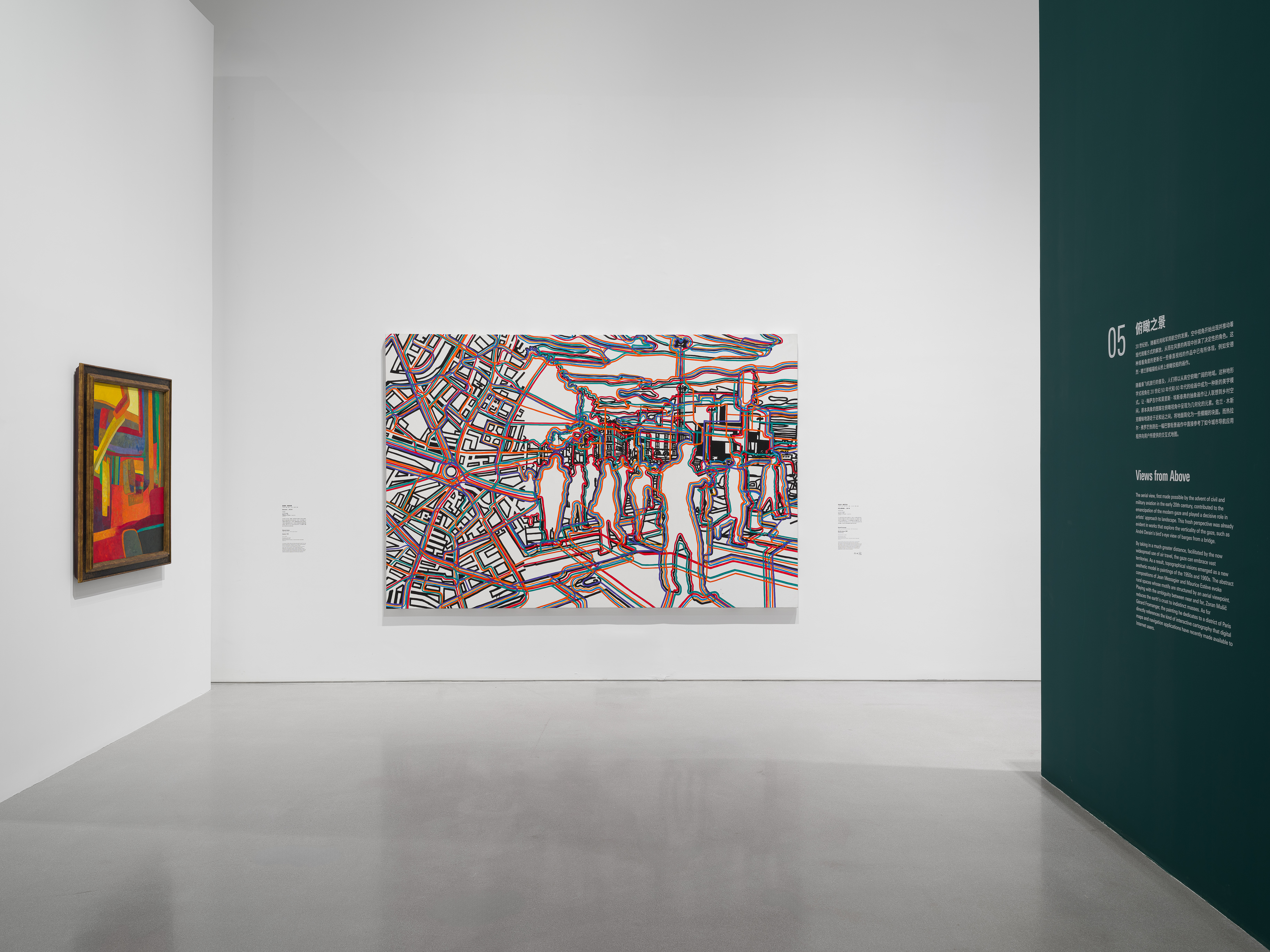The aerial view, first made possible by the advent of civil and military aviation in the early 20th century, contributed to the emancipation of the modern gaze and played a decisive role in artists’ approach to landscape. This fresh perspective was already evident in works that explore the verticality of the gaze, such as André Derain’s bird’s-eye view of barges from a bridge.
By taking in a much greater distance, facilitated by the now widespread use of air travel, the gaze can embrace vast territories. As a result, topographical visions emerged as a new aesthetic model in paintings of the 1950s and 1960s. The abstract compositions of Jean Messagier and Maurice Estève evoke rural spaces whose motifs are structured by an aerial viewpoint. Playing with the ambiguity between near and far, Zoran Mušič reduces the earth’s crust to indistinct masses. As for Gérard Fromanger, the painting he dedicates to a district of Paris directly references the kind of interactive cartography that digital maps and navigation applications have recently made available to Internet users.
